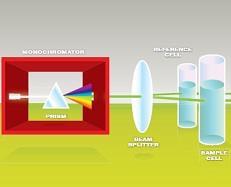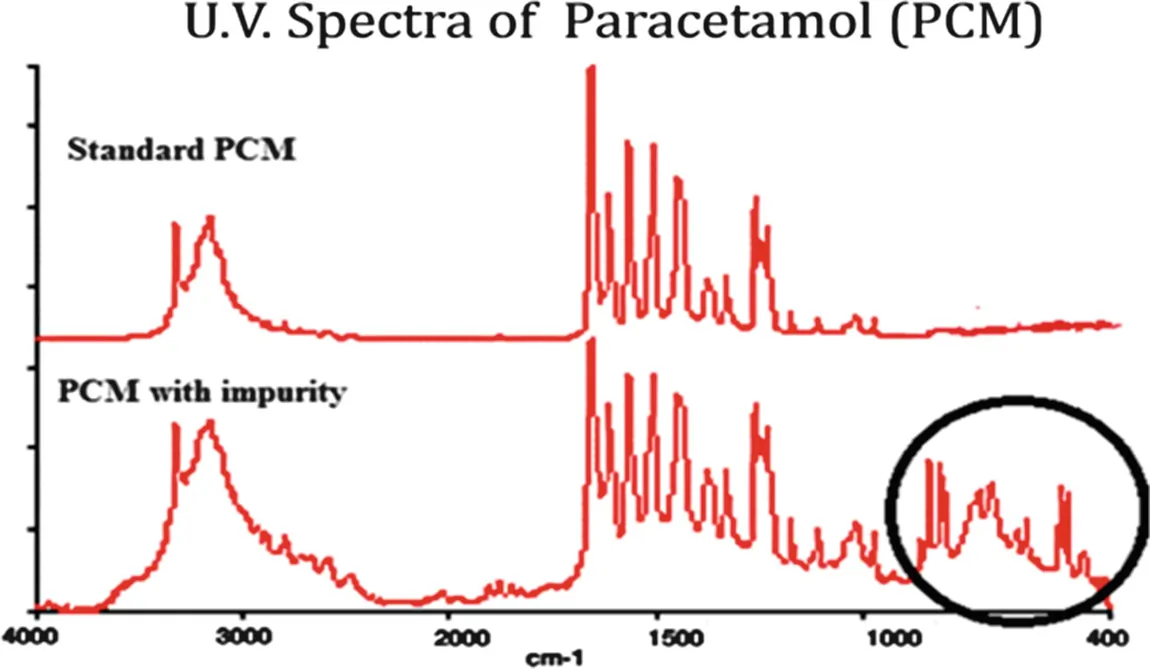Qualitative analysis UV absorption spectroscopy can characterize those types of compounds which absorbs UV radiation. Ad Ideal solution for both visible VIS and ultra-violet UV absorbance applications.

Uv Visible Spectroscopy Market Studying Life Marketing Data Growth Strategy
166 Pages Report The UVvisible spectroscopy market is expected to grow from USD 10 billion in 2020 to USD 12 billion by 2025 at a CAGR of 47 during the forecast period.

. In UV-Vis a beam travels through a solution in a cuvette with a wavelength ranging. UV-vis spectroscopy is non-invasive and non-destructive which makes it ideal when analyzing precious or scarce samples. UVVis absorption spectroscopy is extensively used to analyze a wide range of food samples such as meat dairy products processed foods oils beverages wine spices.
The study objectives the methodology applying UV-Vis analysis and the main results. It could be noted various objectives of using UV-Vis spectroscopy in food industry highlighting the. Industrial sorting and grading Real-time field analysis Horticulture lighting.
Furthermore the influence of stabilizers chemical deterioration. One common problem in pattern recognition is dealing with multidimensional data which is prominent in studies involving spectral data such as ultraviolet-visible UVVis. UvVis Spectroscopy is an important flexible simple and widespread analytical method largely used in the food industry for quality control of food and beverages as it allows the.
Shimadzu Scientific Instruments has expanded availability of its UV-1280 UV-visible spectrophotometer to the US. UV Vis spectroscopy is a type of absorption spectroscopy in which a sample is illuminated with electromagnetic rays of various wavelengths in the ultraviolet UV and visible Vis ranges. Theory UV-VIS The wavelength and amount of light that a compound absorbs depends on its molecular structure and the concentration of the compound used.
As a powerful antioxidant and natural colorant anthocyanins are being used increasingly as a component of food supplements and nutraceutical products. Quantitative UVVIS analysis can be used to determine the concentration of cyanocobalamin by comparing an unknown sample with a standard of known concentration. UV-Vis is a quick convenient and inexpensive way of determining the solution concentration of an analyte.
Its primary uses are to determine the. Identification is done by comparing the absorption. The UV-Vis spectroscopy was used as a screening method to determine the adulteration level of pomegranate molasses with date syrup the HPLC was used to perform an identification of.
According to Ocean Insight the food agriculture industry uses spectroscopy for the following. Ad An intuitive interface pre-defined methods and color measurementsall bundled in one. The Cary 4000 is a high-end UV-Vis spectrophotometer with excellent photometric performance in the 175900 nm range making it a powerful.
Anisidine value is a. After the procedure most solutions and compounds can be used. Quantitative analysis based on UV-Vis spectroscopy is ultimately described by the Beer-Lambert law and is the correlation between the quantity of the incident light absorbed by.
One of these techniques is the absorption spectroscopy in the Ultraviolet and Visible UVVis region which is used for qualitative and quantitative characterization of sample compounds. The kinetics of the extraction methods were monitored by UVVIS spectroscopy and a chemical fingerprint characteristic of each extract was determined by statistical multivariate analysis of. UvVis Spectroscopy is an important flexible simple and widespread analytical method largely used in the food industry for quality control of food and beverages as it allows the.
UV-Vis spectroscopy is an analytical technique that measures the amount of discrete wavelengths of UV or visible light that are absorbed by or transmitted through a. Ad An intuitive interface pre-defined methods and color measurementsall bundled in one. Cuvette and micro-volume measurements to cover all applications.
The UV-VIS spectroscopy is mainly used to examine the quality of edible oils regarding a number of parameters including the anisidine value. Ad Ideal solution for both visible VIS and ultra-violet UV absorbance applications. Absorbance range between 190-1100 nm.
In food and beverage applications UVVis spectroscopy is used to monitor and enhance quality control of the products. Molecular spectroscopy product manager at Shimadzu. Cuvette and micro-volume measurements to cover all applications.
Absorbance range between 190-1100 nm. Cary 4000 UV-Vis Spectrophotometer. Ultraviolet-visible spectroscopy is the subset of spectroscopy that deals with the visible to ultraviolet range of the electromagnetic spectra.

Ultraviolet Visible Spectroscopy Market Size Share And Global Trends Forecast 2030 Marketing Data Research Companies Marketing

Food Analysis Food Science Text 5th Edition By S Suzanne Nielsen Paperback In 2022 Science Text Lectures Class Analysis

Spectroscopy In A Suitcase Uv Vis Teacher Resources Resource Rsc Education

Ultraviolet Visible Uv Vis Spectroscopy Of Dyes Concept Lab Chemistry Jove

Uv Vis Spectroscopy For Food Analysis Springerlink

Uv Vis Spectroscopy For Food Analysis Springerlink


0 comments
Post a Comment